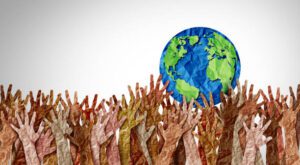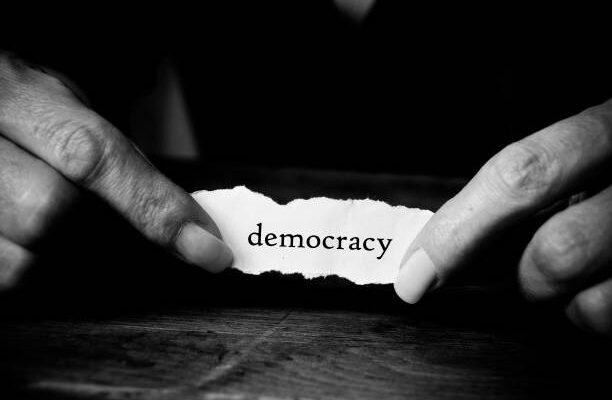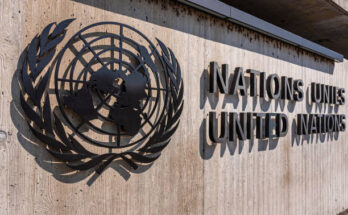The waves of democracy in political science are significant upsurges of democracy that have happened throughout history. Despite the fact that the phrase dates back at least to 1887 political scientist Samuel P. Huntington of Harvard University popularized it in a 1991 book. Titled The Third Wave: Democratization in the Late Twentieth Century and in an article, he wrote for the Journal of Democracy. Rapid changes in the balance of power among the major countries have been linked to waves of democratization. Which provide opportunities and motivation to enact extensive domestic reforms.
The exact number of democratic waves is a topic of academic discussion. Huntington talks about three waves: the first, “slow” wave of the 19th century, a second wave following World War II. And a third wave starting in South Europe in the middle of the 1970s, followed by waves in Latin America and Asia. Several academics have expanded the “Third Wave” to include the democratic changes of 1989–1991. Despite the fact that his book does not address the fall of the Soviet Union. 13 waves spanning the 18th century to the Arab Spring have been mentioned by other academics. Including Seva Gunitsky of the University of Toronto.
FIRST WAVE
The First Wave of Democracy, 1828–1926 started in the early 19th century when the majority of white males in the United States were given the right to vote (referred to as “Jacksonian democracy”). Then, before 1900, came the following countries: France, Britain, Canada, Australia, Italy, and Argentina. After the collapse of the Ottoman, Russian, German, and Austrian empires in 1918. The first wave peaked with 29 democracies around the world.
When Benito Mussolini became the leader of Italy in 1922, the tide started to turn. Newly established democracies were largely affected by the collapse. Because they were unable to withstand the aggressive growth of fascist, totalitarian, and military authoritarian movements. That systematically rejected democracy. The first wave’s low point occurred in 1942, when there were only 12 democracies left in the world.
SECOND WAVE
The second wave started after the Allies won World War II and peaked in 1962. When there were 36 certified democracies worldwide. At this point, the Second wave also began to wane, and between 1962 and the middle of the 1970s. There were only 30 democracies left in existence. The third wave, however, was about to rise in a way no one had ever seen, thus the “flat line” would not survive for long.
When women’s suffrage is taken into consideration, scholars have observed that the appearance of “waves” of democracy mostly vanishes. In addition, certain nations shift their stances rather dramatically: Typically regarded as a member of the first wave. Switzerland did not grant women the right to vote until 1971.
THIRD WAVE
The third wave started in 1974 with the Carnation Revolution in Portugal and the transition to democracy in Spain in the late 1970s. Then, during the 1980s, there were historic democratic transitions in Latin America, Eastern Europe following the fall of the Soviet Union, and sub-Saharan Africa starting in 1989. In certain places, democracy has grown astonishingly. By 1978, just three Latin American nations—Colombia, Costa Rica, and Venezuela—were democratic, and by 1995, when the wave had swept through twenty nations, only two—Cuba and Haiti—remained totalitarian.
Three-fourths of the people of the new democracies were Roman Catholics, according to Huntington. The majority of Protestant nations were already democratic. He draws attention to the 1962 Vatican Council, which transformed the Catholic Church from a supporter of the status quo into an opponent of totalitarianism.
 (Photo from istock)
(Photo from istock)
Democracy can regress in nations that are experiencing or have recently undergone a wave of democratization. Political scientists and theorists predict that, like its forerunners in the first and second waves, the third wave has peaked and will soon start to ebb.
After the September 11, 2001 assaults on the United States, the “war on terror” officially began, but there was considerable backsliding in the interim. It is yet unclear how extensive or long-lasting that degradation is. Countries from the third wave, such as Portugal, Spain, South Korea, and Taiwan, have fully consolidated their democracies rather than regressing. They even had more robust democracies as of 2020 than many of their rivals who had considerably longer histories as democratic nations.
THE ARAB SPRING
Experts link the Arab Spring phenomenon, which has seen the fall of various dictatorships in the Middle East and North Africa, to the events that followed the Soviet Union’s collapse in Eastern Europe. The two occurrences’ similarities gave rise to the prospect of a fourth wave of democratization. However, most of the Arab political openings closed a few months after the shift appeared to be starting, prompting an eventual pullback.
The military-controlled government in Egypt was one of the most concerning situations, as it did nothing to aid the country’s transition to democracy. A specific illustration is given by the case of Egyptian blogger Maikel Nabil, who was sentenced to three years in prison for “insulting the military establishment.” Corruption, unemployment, social injustice, and autocratic political systems are seen as the primary reasons of the decline and catastrophe in all the impacted nations.
DIGITAL MEDIA AND ARAB SPRING
Digital media did not do this alone or as quickly as some observers have suggested. Rather, it had a much longer-term role in fostering the right conditions for upheavals. Assisted in making important sparking events public. And then facilitated those uprisings and their spread. According to Howard and Hussain, the story of the Arab Spring began more than ten years ago as Internet connectivity. And mobile phones spread quickly throughout North Africa and the Middle East.
The wealthy and influential residents who could afford internet access. Were largely responsible for the protests in Bahrain, Egypt, and Tunisia. Online criticisms of regimes over time increased in visibility and frequency. Paving the way for the Arab Spring. Digital media also made it possible for women and other underrepresented groups to participate in these political debates. Ultimately, the protests and revolutions that followed.
Reference:
Brewminate
Click here to know about NGOs:
How influential are NGOs in real life




